Search for missing fragments from Stone of Destiny
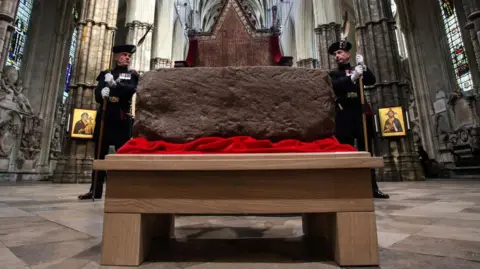 PA Media
PA MediaA search is under way to trace up to 30 missing fragments of the Stone of Destiny - the ancient coronation stone of Scottish kings.
The pieces were separated from the artefact when it was secretly repaired following its famous removal from Westminster Abbey in 1950 by nationalists students.
Prof Sally Foster from Stirling University is working to uncover the history of as many pieces as possible, with as many as 34 fragments thought to be in existence.
But the exact location of most of these small chips remains a mystery as they have been passed down through families or are in private collections.
The 152kg sandstone block split in two during the famous Christmas Day raid in 1950, when four pro-independence students removed it from Westminster Abbey and took it back to Scotland.
The ancient symbol of Scottish monarchy had been seized and removed from Scotland six centuries earlier by the English King Edward I.
Stonemason and nationalist politician Bertie Gray oversaw the repair of the stone, which involved inserting three metal pins to help join the pieces back together.
A number of chips were created as a result which he carefully numbered and recorded.
Mr Gray passed them on to the students who carried out the raid - as well as those he admired in the campaign for Scottish independence.
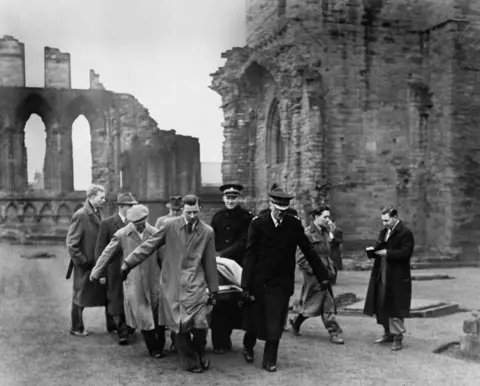 PA Media
PA MediaThe stone was recovered in March 1951, shortly after it was repaired, when it was left at Arbroath Abbey.
The students who took it were never prosecuted - they maintained it was not a theft as they were simply returning the artefact to Scotland.
Prof Foster believes Mr Gray's repair work resulted in as many as 34 numbered fragments of the original stone.
So far she has managed to confirm the locations of four of them.
An inch-sized piece turned up last year after it was found in storage at the SNP's headquarters.
Newly-released cabinet papers had earlier revealed it was given to Alex Salmond in 2008 by Sir Neil MacCormick, son of SNP co-founder John MacCormick who funded the 1950 raid.
The Commissioners for the Safeguarding of the Regalia - the body of senior officials charged with overseeing the Scottish crown jewels - are currently considering what should happen with the fragment gifted to Mr Salmond.
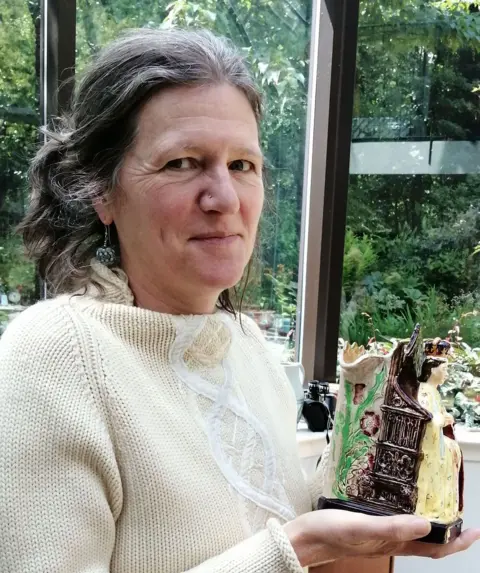 PA Media
PA MediaProf Foster's research, funded by the The British Academy and the Leverhulme Trust, has involved combing through old newspaper archives dating back decades.
The project, titled Authenticity's Child, has uncovered numerous references to pieces of the stone, and some have turned up in surprising locations.
Prof Foster said some were "hidden in plain sight".
Aside from Alex Salmond, other prominent nationalists who received small chips include Margo MacDonald and Winnie Ewing - who had her piece fashioned into the centre of a brooch.
Canadian journalist Dick Sanburn received chip number 25 in 1951 and proudly kept it behind his desk at the Calgary Herald.
He said the fragments were "carefully numbered and recorded to prevent a flood of fakes".
Former Lord Provost of Glasgow Sir Patrick Dollan displayed his chip to attendees at a concert in 1959.
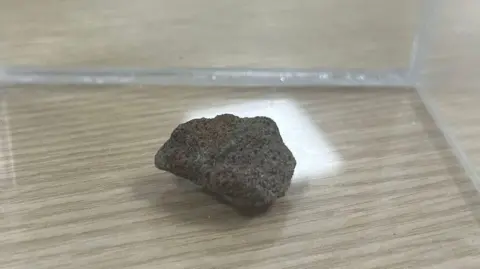 PA Media
PA MediaSpeaking to the PA news agency, Prof Foster said she met representatives from the Commissioners for the Safeguarding of the Regalia last year.
She said she had realised they may be making a decision about Mr Salmond's fragment in "complete ignorance of the fact that there were others out there" beyond one that had come up for auction in 2018.
Prof Foster said: "Even at that stage I was aware there were other fragments, but I had not yet realised just how many there were going to be.
"Each one of these things has got a fantastic story in its own right, telling us about the meaning of the stone for ordinary as well as famous people.
"Cumulatively, these offer valuable new perspectives to the enduring relevance of this national icon."
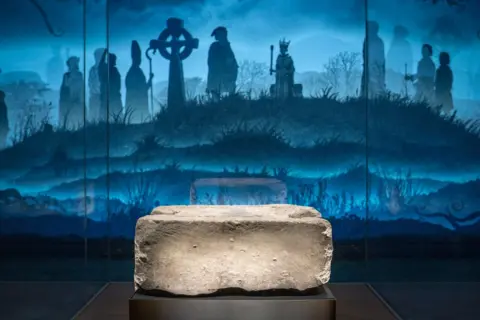 PA Media
PA MediaUp until his death in 1975, Bertie Gray styled himself as the man who repaired the Stone of Destiny, but he never publicly revealed how many fragments he made.
Prof Foster hopes to speak to members of his family who may be able to shed more light on where the pieces are.
Her project has also tracked the fate of other, more official, fragments of the Stone of Scone which were taken as geological samples in the 19th Century.
Prof Foster added: "It would be lovely to see more of these in the public domain and the stories being shared and celebrated."
A Scottish government spokesman said the government welcomed Prof Foster's research and was liaising with her on the project.
The stone, also known as the Stone of Scone, was moved to its new home at Perth Museum last year, where it sits as the centrepiece of an exhibition on Scotland's history.
It was briefly taken to London in 2023 for the coronation of King Charles to continue its ancient role in the monarchy.
